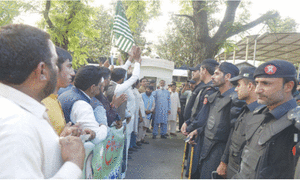
We all know that the Eiffel Tower was built for the international architecture exhibition in 1889. The idea by its creator Gustave Eiffel was to prove that the newly-developed wrought iron technology could also be used for high-rise structures, and not just for fences and gates.
Like other showpieces the tower was supposed to be dismantled once the exhibition was over. However this had to be put off for months, then years and then some more years, on account of the unending tourist queues. To cut a long story short, this has been going on now for the past 130 years and the tower has become an international attraction as well as an icon for the world’s most beautiful city.
What only a few people in France know (and this happens to be a very recent discovery, I admit, for me too!) is the fact that for a similar international exhibition in 1878 two pavilions were built to demonstrate Scandinavian and Indian construction techniques. The architect behind the Swedish-Norwegian villa was Enrik Thrapp-Meyer while the Indian palace was the result of Caspar Purdon Clark’s imagination.
Pavilions built to demonstrate Scandinavian and Indian construction techniques are now France’s national historical monuments
Much the same way as the Eiffel Tower, both the structures were supposed to be demolished once the exhibition was over. But history had other ideas.

Prince George Barbu Stirbei, a Romanian aristocrat living in Paris, happened to be a great friend of the French intellectual, writer and occasional painter, Gustave Fould. The two men were like brothers to each other and Fould had chosen the first name ‘George Achille’ for his elder daughter; the second daughter was called ‘Consuelo.’ Upon Fould’s unexpected death, the prince considered it his duty to take care of the two girls, who grew up to be excellent painters.
Prince Stirbei owned a vast and magnificent garden in Courbevoie on the hilly side across the River Seine, hardly 45 minutes walk away from the Arc de Triomphe. Following a visit to the exhibition, and stunned by the beauty of the above-mentioned pavilions, he offered to buy them both and have them disassembled at his own expense, then transfer the pieces to his garden.
Within a year, a Scandinavian and an Indian aristocratic residence rose up again along the western and eastern ends of the garden and the two sisters moved in, lived and painted in them till the end of their long lives. The Becon Park, as it is called today, and the houses were recently declared national historical monuments.

Here comes another surprise! Little is known outside of France about Ferdinand Roybet, a late 19th century/early 20th century artist who created magnificent paintings. Most of these were bought by the Fould sisters who were rich enough to acquire contemporary artworks.
Today the Scandinavian villa has become a museum called Musée Roybet-Fould that contains most of the works by the three artists, George Achille-Fould, Consuelo Fould and Ferdinand Roybet.
The administrators of the city of Courbevoie also had the idea of turning the golden-domed Indian palace into an artists’ residence and workshop. Every 18 months, a nationwide competition is held in cooperation with the Beaux-Arts School of Paris. The winner stays there for the next year-and-a-half, creating paintings or sculptures at his or her own pace.
The park, the museum and the palace are all open to the public. Don’t miss them next time you happen to be in Paris!
The writer is an art critic based in Paris. ZafMasud@gmail.com
Published in Dawn, EOS, June 18th, 2017














































